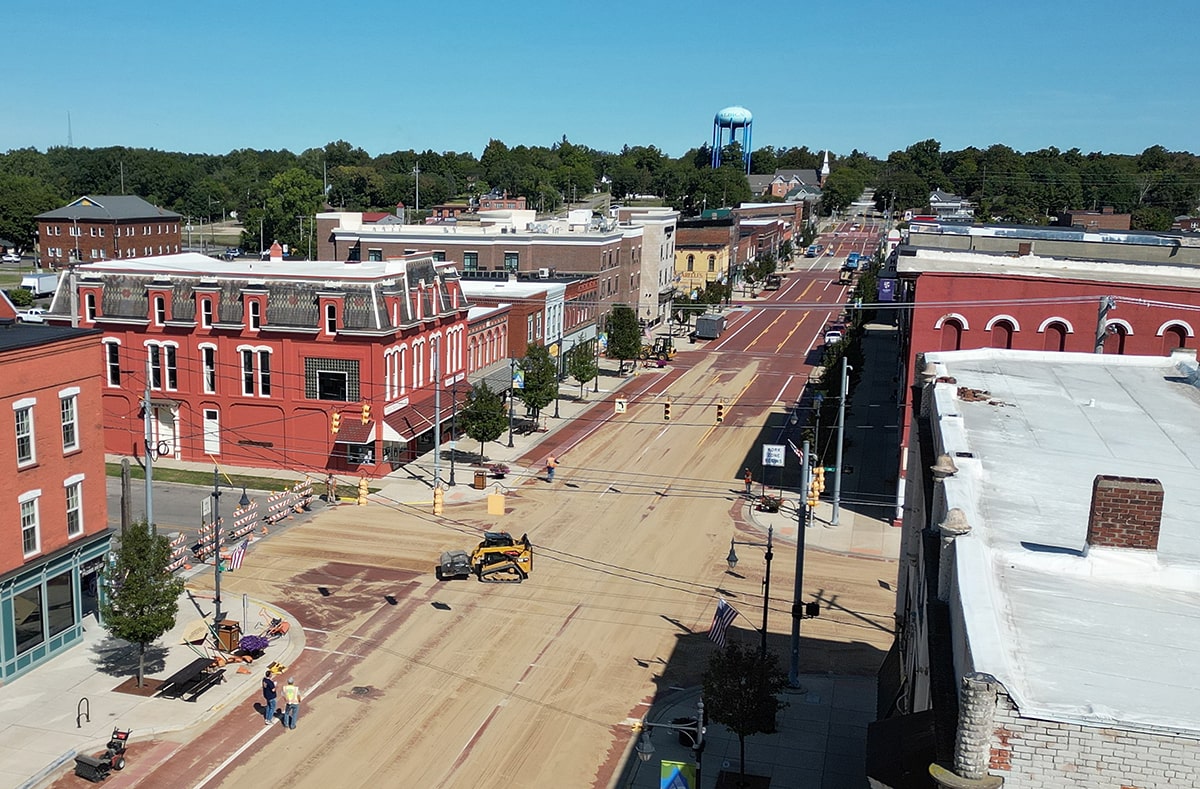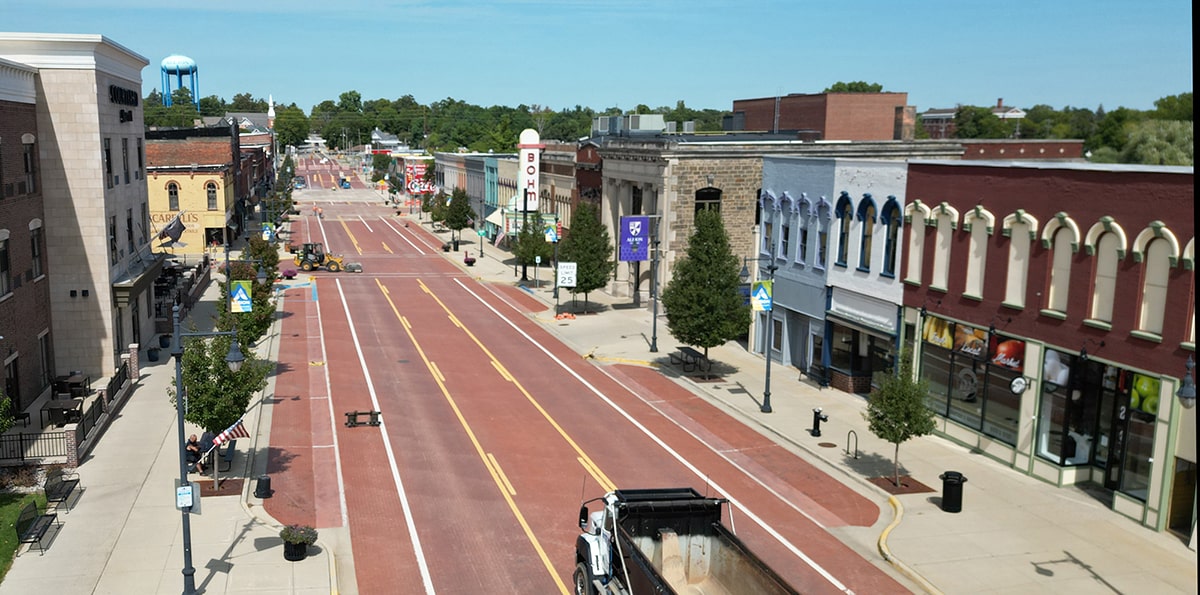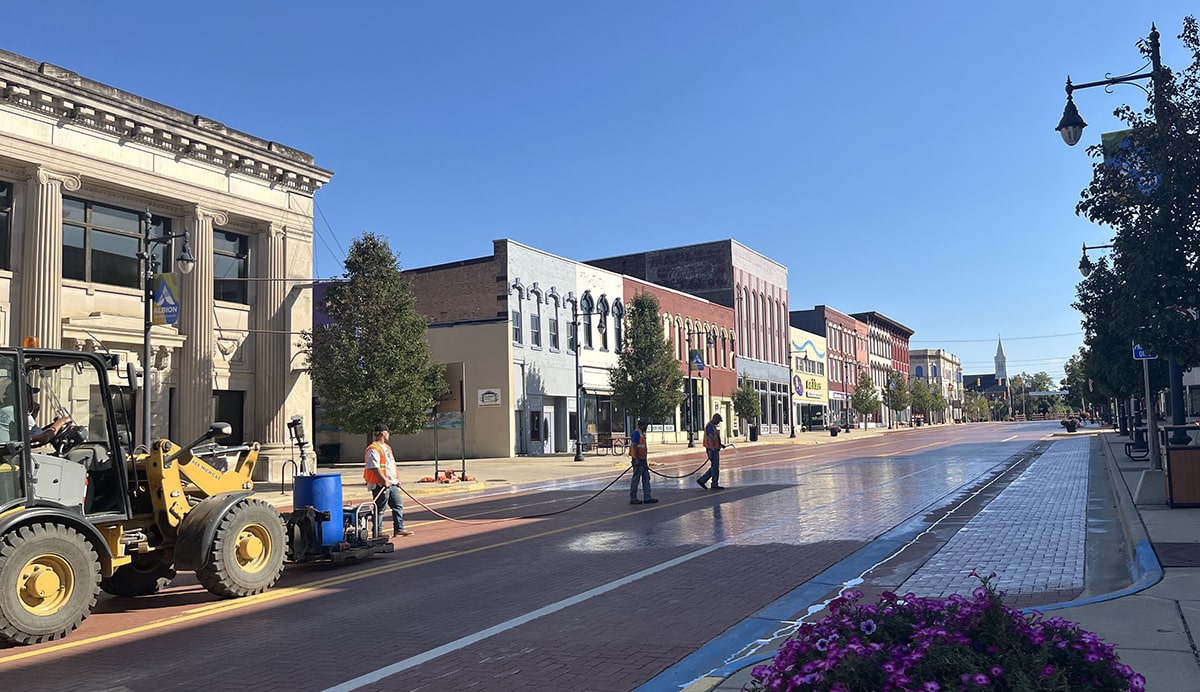
By Maggie LaNoue
Contributing Writer
September 26, 2025


Takacs added that the process should ideally be repeated every ten years in communities that maintain brick streets. By locking the bricks in place and protecting the joints, the treatment extends the life of the roadway while preserving the look that makes Albion’s downtown unique.
Albion’s relationship with brick paving stretches back more than a century. Superior Street was first bricked in 1903, making it one of the early brick trunklines in Michigan. By 1940, the original surface had deteriorated, and a major Works Progress Administration project gave the street a new life. That reconstruction used a concrete base with new bricks on top, and even featured white bricks to mark crosswalks and parking spaces.
The event was celebrated with a gala ribbon cutting and parade, reflecting how deeply the community valued its brick street.
In 1993, the bricks were replaced again with help from MDOT and the Federal Highway Administration. Local merchants rallied under the theme “Paving the Way for a Superior Future,” complete with storefront promotions and a special postal cancellation.
The most recent complete rebricking came in 2017–2018, ensuring a strong foundation while retaining the historic character of Superior Street’s commercial district.

Today, Albion’s brick downtown is part of the Superior Street Commercial Historic District, listed on the National Register of Historic Places. The bricks complement the Italianate storefronts and historic facades lining the street, making them as much a cultural landmark as a functional roadway. Regular maintenance, like the work carried out this week, is essential for keeping that legacy intact. Without treatment, the joints between the bricks would deteriorate over time, allowing water to seep in and cause damage during Michigan’s harsh freeze-thaw cycles.
For residents and business owners, the temporary inconvenience of a closed street comes with the assurance that Albion’s signature roadway will endure for future generations. Albion has long shown pride in its brick main street, celebrating each new generation of improvements. The work of 2025 adds another chapter to that story—a blend of history, engineering, and community identity written one brick at a time. Much of this history has been carefully recorded by Albion historian Frank Passic, who has been researching and writing about Albion and its people since the 1970s.
A graduate of Albion High School and Spring Arbor University, Frank has contributed weekly articles for nearly fifty years, sharing Albion’s heritage in the Morning Star, The Recorder, and on his long-running website, albionmich.com.
More creative work for those who love Albion Michigan. Click here or a picture to read the legends and to find out how to order.